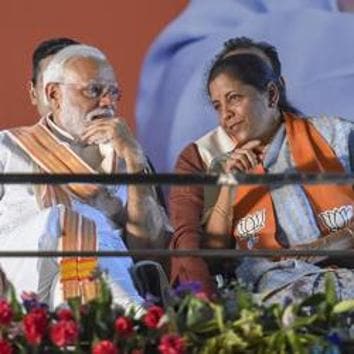Build the budget around government spending
In India’s boom years ahead of the 2008-09 economic crisis, it was investment, albeit private, that powered growth. With the export market under significant squeeze today compared to what it was before the crisis, one important driver for private investment is missing
Despite its name, this column ventures rarely into the realm of economics, but with the Union Budget just a month away, and the Indian economy growing by its slowest in five years in the three months ended March, it is time.

The question uppermost on everyone’s minds is: what can the government do?
It’s a simple question (five words in all), but a crucial one. And it is being posed of the new government at a time when: one, global growth is slowing; a full-blown trade war is brewing; private investment in India is falling; and consumption growth is slowing. The Indian economy’s biggest vulnerability is oil, and in its first term, the Narendra Modi-led government benefited from a benign global oil price regime. That isn’t available to the new Modi-led government; indeed, it should count its blessings if oil doesn’t go over $75 (it is currently in the early 60s to the barrel).
It is being posed also at a time when consumers are low on confidence according to the Reserve Bank of India’s latest consumer confidence survey.
So, what can the government do?
From the long-term and medium-term perspective, the government should continue to make it easier to do business, get out of as many businesses as it can itself, strengthen the bankruptcy code, widen the tax base (even as it reduces tax rates), address the mess in banks (which has now also spread to the shadow banks), and take the plunge into politically sensitive issues such as land, labour, even agricultural reform.
But this is not going to work in the short-term. For instance, given the amount of debt on their books, even top business groups (including most of the well-run ones) are not going to be making substantial investments. Nor will any of these measures help put more money in the hands of people, increasing both discretionary and non-discretionary consumption. Both are critical to reviving growth. In India’s boom years ahead of the 2008-09 economic crisis, it was investment, albeit private, that powered growth. With the export market under significant squeeze today compared to what it was before the crisis, one important driver for private investment is missing.
If private investment isn’t going to be forthcoming, then the government has to fill the breach with public investment. It can do this in two ways. One, through an expansion of large-scale government programmes such as the Pradhan Mantri Awas Yojana or the highways programme of the National Highways Authority of India.
Two, it can get the larger and more profitable state-owned companies to expand capacity. Indeed, they could be asked to double capacity before 2022.
Both would result in several cascading effects, all beneficial. They would boost demand for engineering products and services, heavy equipment, steel, cement, just about all the things that power economic growth. They would create new jobs. And, because they involve so much building, they will stimulate the country’s somnolent construction sector. Apart from being all that is, the construction sector is the biggest employer of unskilled labour in the country. Indeed, many small farmers (or farm workers) spend the non-agricultural season as construction workers in large cities. This will be even more important if there is a rainfall deficit in certain parts of the country.
Even as it does this, the government should consider a fiscal stimulus that can boost consumption — the excise cuts that powered up the passenger car business in the wake of the 2008-09 financial crisis, for instance, although there is no longer an excise regime and the passenger car business has problems other than a high rate of tax – and measures that can increase the country’s exports. If tax receipts for the past few months are any indication, the GST regime is stabilising, and the GST Council should consider some rationalisation of rates and slabs. Simultaneously, the government should consider small but significant cuts in the direct tax rates for both individuals (at all income levels) and companies.
There is a time for thinking about taxing the rich more and levying wealth taxes, but this may not be it. This is a time to unleash animal spirits in the economy.
The argument against all of this is, of course, the fiscal one. Can the government afford to do any of these without its fiscal deficit bloating? A subsidiary argument (especially because India’s growth is constrained by capacity) is whether the resultant growth will be inflationary. The answer to the second question is yes, but not by much, and there is some leeway still available in terms of inflation ; it is very low right now. The answer to the first is that while it will be difficult, it can be managed if done smartly. If the measures suggested above do work and boost growth, an increase in revenue collection could actually take care of the fiscal deficit.
The budget that finance minister Nirmala Sitharaman presents on July 10 should be built around government spending.
letters@hindustantimes.com






